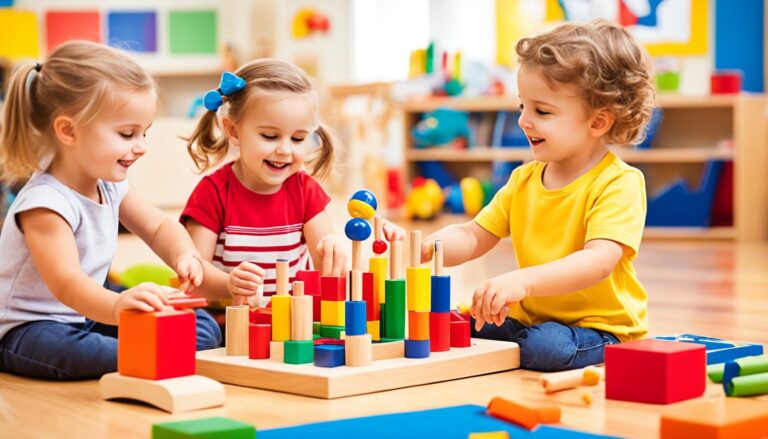The Journey of Child Growth and Development Stages: From Infancy to Adolescence
Child growth and development stages are a fascinating and transformative journey that spans from infancy to adolescence. These stages are crucial in shaping a child’s physical, cognitive, emotional, and social development. As parents, caregivers, and educators, it is essential to understand these milestones to provide the right support and nurture each child’s unique needs.
Key Takeaways:
- Child growth and development stages encompass the entire journey from infancy to adolescence.
- Understanding these stages is vital for parents, caregivers, and educators to support each child’s needs effectively.
- Physical, cognitive, emotional, and social development are all interconnected and occur throughout these stages.
- Each stage presents unique challenges and opportunities for growth and development.
- By providing a nurturing environment and tailoring approaches to meet individual needs, we can support holistic development.
The Importance of Early Childhood Development
Early childhood development is a critical period that lays the foundation for a child’s future growth and learning. During this stage, children undergo significant cognitive and emotional development, setting the stage for their overall well-being.
The cognitive development that occurs during early childhood is remarkable. Children acquire language skills, expand their vocabulary, and develop the ability to understand and express complex thoughts. This cognitive growth sets the stage for future academic success and critical thinking skills.
Emotional development is equally important during early childhood. Children establish secure attachments with caregivers, which lays the groundwork for healthy relationships throughout their lives. They also learn to regulate their emotions and empathize with others, building the foundation of their emotional intelligence.
“The early years are crucial for brain development, and positive experiences during this period provide a strong foundation for later learning and behavior.” – American Academy of Pediatrics
Providing a nurturing and stimulating environment is paramount during early childhood. Interactions with caregivers, exposure to age-appropriate stimuli, and opportunities for play and exploration all contribute to a child’s holistic development.
A well-rounded early childhood education is also vital for promoting optimal growth and development. High-quality early education programs focus on cognitive and emotional development through structured learning activities, social interactions, and individualized attention.
The Benefits of Early Childhood Development
Investing in early childhood development yields numerous short-term and long-term benefits. Here are some key advantages:
| Benefits of Early Childhood Development | Description |
|---|---|
| Enhanced cognitive development | Early stimulation promotes language acquisition, problem-solving skills, and memory. |
| Improved school readiness | Children who experience positive early childhood experiences are more prepared for formal education. |
| Reduced social and emotional difficulties | A nurturing environment fosters emotional regulation, empathy, and positive social relationships. |
| Long-term health benefits | Positive experiences during early childhood contribute to healthier lifestyles and reduced risks of chronic conditions. |
Early childhood development sets the stage for a child’s lifelong learning and well-being. By recognizing the importance of this critical period, we can create environments and experiences that foster optimal cognitive and emotional growth.
Milestones in Middle Childhood
Middle childhood, typically spanning from ages 6 to 12, is a crucial stage in a child’s development. During this period, children experience significant milestones in their social and physical development, setting the foundation for their future growth.
Social Development
One of the key milestones in middle childhood is the development of strong peer relationships. Children at this stage begin to form friendships based on shared interests and mutual support. These friendships play a vital role in their social and emotional well-being, providing opportunities for learning and personal growth. Additionally, middle childhood is the stage where children refine their communication and social skills, becoming more adept at expressing their thoughts and emotions, resolving conflicts, and cooperating with others.
Quote: “Middle childhood is the time when children learn to navigate the complexities of social interactions and develop important skills such as empathy and perspective-taking.”
Physical Development
Another major milestone in middle childhood is the continued physical growth and development of children. At this stage, there is significant improvement in gross and fine motor skills, coordination, and strength. Children become more coordinated in their movements, allowing them to participate in various sports, activities, and hobbies that require complex movements and control. Physical development in middle childhood also includes the growth of permanent teeth, the development of more efficient sensory systems, and the refinement of hand-eye coordination.
| Aspect of Physical Development | Milestones |
|---|---|
| Gross Motor Skills | – Running, jumping, and hopping with more control – Riding a bicycle without training wheels – Participating in team sports |
| Fine Motor Skills | – Writing with increased control and legibility – Tying shoelaces and buttoning clothes independently – Using scissors to cut along straight lines |
| Coordination and Strength | – Improved balance and hand-eye coordination – Increased strength and stamina – Ability to perform complex physical tasks |
These physical milestones contribute to children’s overall well-being, allowing them to explore and engage with the world around them.
Overall, middle childhood is a pivotal period in a child’s development. It is during this stage that children develop important social skills, establish relationships, and gain a better understanding of themselves and others. Simultaneously, physical development provides children with the tools they need to navigate the physical demands of everyday life and pursue various interests and activities.

Navigating the Challenges of Adolescence
Adolescence, a transitional period between childhood and adulthood, is a time of immense growth and change. It is during this phase that teenagers undergo rapid physical, cognitive, and emotional transformations that shape their identities and lay the foundation for their future journeys.
One significant aspect of adolescence is the heightened self-awareness that teenagers experience. They begin to question who they are, what they believe in, and where they fit into the world. This exploration of identity formation is a crucial part of their development and plays a fundamental role in shaping their sense of self.
“Adolescence is a journey of self-discovery where teenagers try to find their place in the world and establish their unique identities.”
Alongside identity formation, teenagers often grapple with the pressures of social expectations and peer influence. The desire to fit in and be accepted by their peers can lead to challenging situations and difficult decision-making. Understanding the impact of peer pressure and helping teenagers navigate these challenges are essential responsibilities for parents and educators.
Cognitively, adolescence is marked by significant changes that contribute to teenagers’ ability to think and reason abstractly. This cognitive development allows them to engage in logical reasoning and consider multiple perspectives. With these newfound cognitive abilities comes the opportunity for intellectual growth and exploration.
| Challenges of Adolescence | Opportunities for Growth |
|---|---|
| Heightened self-awareness | Exploring personal values and beliefs |
| Peer pressure and societal expectations | Developing independence and assertiveness |
| Abstract thinking and logical reasoning | Expanding knowledge and critical thinking skills |
As the journey through adolescence can be challenging, sensitive guidance and support from parents and educators are vital. By fostering open communication, providing a safe space for teenagers to express themselves, and offering guidance on decision-making, adults can play a key role in helping them navigate the complexities of this transformative period.
Ultimately, understanding the unique challenges and opportunities presented during adolescence is crucial for promoting healthy development. By addressing these challenges with empathy, patience, and support, we can empower teenagers to embrace their journey of self-discovery and emerge as confident, capable individuals ready to navigate the complexities of adulthood.

Conclusion
Child growth and development stages are a complex and interconnected process that spans from infancy to adolescence. Each stage presents unique challenges and opportunities for growth, encompassing physical, cognitive, emotional, and social development. Understanding these milestones is essential for supporting children’s holistic development.
By providing a nurturing and stimulating environment, parents, caregivers, and educators can play a vital role in guiding children through their journey of growth and development. Creating a supportive atmosphere that fosters positive relationships and tailoring approaches to meet individual needs are key to nurturing children’s overall well-being.
Supporting children’s growth involves empowering them to explore their full potential, both academically and emotionally. Encouraging their curiosity and providing opportunities for learning and creativity contribute to their cognitive and emotional development. By engaging them in meaningful activities that enhance their problem-solving skills, communication, self-regulation, and empathy, we can prepare them for the challenges they may face in the future.
As children progress through each stage, it is crucial to recognize their individuality and provide the necessary support and guidance. Every child’s journey of growth and development is unique, and it is our responsibility, as caregivers and educators, to empower them to become confident and resilient individuals.
FAQ
What are the different stages of child growth and development?
The stages of child growth and development encompass infancy, early childhood, middle childhood, and adolescence.
What happens during early childhood development?
During early childhood, children develop essential cognitive skills such as language acquisition, problem-solving, and memory. They also experience emotional development, form secure attachments, and develop self-regulation and empathy.
What are the milestones in middle childhood?
Middle childhood, typically spanning from ages 6 to 12, is marked by significant milestones in social and physical development. Children at this stage develop strong peer relationships, refine their communication and social skills, and begin to understand complex moral concepts. Physical growth continues, with improvements in gross and fine motor skills, coordination, and strength.
What challenges do adolescents face during adolescence?
Adolescence is a time of rapid physical, cognitive, and emotional changes. Teenagers experience heightened self-awareness, explore their identities, and grapple with peer pressure and societal expectations. They also undergo cognitive development, such as abstract thinking and logical reasoning.
How can parents, caregivers, and educators support child growth and development?
Parents, caregivers, and educators can support child growth and development by providing a nurturing and stimulating environment, fostering positive relationships, and tailoring approaches to meet individual needs. Understanding the different stages and milestones of development is crucial in providing appropriate support and guidance.






